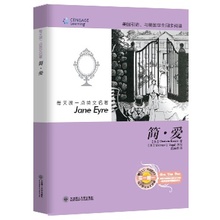改写的英文
来源:学生作业帮助网 编辑:作业帮 时间:2024/09/23 02:18:50 体裁作文
篇一:英语改写句子的规则
改写句子的规则
(一)改写一般疑问句:
(1)原句中有be动词的,将be动词提前,其他顺序不变。
例如:This is a cat.变为Is this a cat?
(2)原句中有情态动词的(can/may/shall/would)将情态动词提前,其他顺序不变。 例如:He would like a pie.变为Would he like a pie?
(3)原句中是一般动词的,在句首加助动词do或dose(用于主语是第三人称动词单数的句子),其他顺序不变。例如:I play the guitar.变为Do you play the guitar.
(4)原句中的some变any。
注:以情态动词开头的一般疑问句,并且要求对方做肯定回答的some不变。
(5)原句中的第一人称改为第二人称。例如:I am a nurse.变为Are you a nurse?
(6)以dose开头的一般疑问句,原来动词的第三人称单数形式要变回原形。例如:He reads a storybook.变为Dose he read a storybook?
(二)改写否定句:
(1)原句中有be动词的,直接在be动词后面加not。例如:It is a dog.→It’s not a dog./It isn’t a dog.
(2)原句中有情态动词的,直接在情态动词后加not。
例如:I would like a hot dog. →I would not like a hot dog.
(3)原句中是一般动词的,在一般动词前加don’t或doesn’t(用于主语是第三人称单数的句子),doesn’t后面用原型。例如:I see three hamburgers. →I don’t see three hamburgers.
原句中的some变any例如:I have some bread and milk. →I don’t have any bread and milk.
(4)以let开头的祈使句,如果是let us或let me,直接在其后加not;如果let后面其他人称代词宾格(you、him、her、them、it)就在let后面加助动词don’t。例如:Let us go to the park. →Let us not go to the park.再如:Let them do homework. →Don’t let them do homework.
(三)对划线部分提问:
对划线部分提问,就是先把一个陈述句的划线部分去掉,然后变为一个特殊疑问句: 一是特殊疑问句+一般疑问句;
二是特殊疑问句+陈述句(对主语或主语的定语提问,there be结构除外)
⑴划线部分是人,用who提问。
⑴划线部分是主语,用who提问,who后面的动词要用第三人称单数形式。如:Who is;Who likes;Who has?
方法:who+原句的剩余部分
例如:①Helen and Mike are listening to music.
→Who is listening to music?
②I have some model planes.
→Who has any model planes?
⑵划线部分是表语,用who提问。
方法:Who+剩余部分的一般疑问句形式
⑵划线部分是事或者物,用what提问。
方法:what+剩余部分的一般疑问句形式。
注:如果原句是there be句型,直接用What’s+地点状语来提问。 例如:①We would like to buy some things for a party.
→What would you like to buy for a party?
②There are a lot of cakes in the plate.
→What is in the plate?
⑶划线部分是物主代词或名词所有格,用Whose提问。
方法:⑴划线部分是主语的定语时,Whose+剩余部分
例如:Our classroom is bright.
→Whose classroom is bright?
⑵划线部分是表语或表语的定语时,Whose+剩余部分的一般疑问句形式 例如:①The woman is Su Yang’s teacher.
→Whose teacher is the woman?
注:对某部分的定语提问,被修饰的部分跟随特殊疑问句往前提 ②This purse is Yang Ling’s.
→Whose purse is this?
⑷划线部分是地点,用where提问。
方法:where+剩余部分的一般疑问句形式
例如:They are haming a Maths lesson in the classroom..
→Where are they having a Maths lesson?
⑸划线部分是“多少”,用how many或how much提问。
方法:⑴句中是可数名词的用How many+剩余部分的一般疑问句形式 例如:There are fifteen trees in the playground.
→How many trees are there in the playground?
⑵句中是不可数名词的用How much+剩余部分的一般疑问句形式 例如:I have a glass of juice for breakfast.
→How much juice do you have for breakfast?
⑹划线部分是时间,用when或what time(具体的几时几分)提问。 方法:⑴when+剩余部分的一般疑问句形式
例如:Su Yang and Su Hai are at home on Sunday morning.
→When are Su Yang and Su Hai at home?
⑵问具体的时间直接用What time is it?或What’s the time?问
例如:It’s three forty-five.
→What time is it?或What’s the time?
篇二:元博老师:托福考试之如何巧妙改写英文句子
元博老师:托福考试之如何巧妙改写英文句子
在美国大学课堂,你一定会遇到改写英文句子!
阅读讲义材料,听教授针对讲义进行讲解,自己把讲义和教授双方的观点综合起来完成笔记或是参考笔记完成相应的作业,这些几乎是每一天都避免不了的程序。因此,托福考试就专门设立了综合写作的考核,主要就是考察学生在完成这些程序的能力。其中,综合总结的要求有一条,尽量不要原封不动地抄写阅读或是听力中内容,而是要进行有质量的改写。以TPO20的综合写作为例,以下罗列出了一些改写的方法。
下面狄邦培训元博老师就带我们一起去看看如何改写英文句子:
1.主动变被动
阅读材料第一段内容:
Because of the large scale of the damage, many people called for replacing the “let it burn” policy with a policy of extinguishing forest fires as soon as they appeared.
作文中可以将其替换成:
The reading passage argues that the “let it burn” policy should be replaced by the policy of extinguishing forest fires as soon as they appeared.
当然,这样是非常死板的主变被,如果个人有能力,还是可以尝试更高级别的转化,如: 听力材料最后一段:
It was a very unusual combination of factors that year, low rainfall, unusually strong winds, accumulation of dry undergrowth that caused fire to be so massive. This combination has not occurred since and Yellowstone has not seen such a fire since 1988.
作文中可以将其替换成:
The massive fire was caused by the low rain fall and the strong wind, which would not occur again.
不仅将主动变成被动,还把其中的形容词变成定语从句。
2.表语与定语的转化
上有一例是把形容词变成定语从句,现再介绍表语与定语的转化。
听力当中第一段内容:
Actually, fires are natural part of ecological cycle and their role is not just destructive but also creative.
作文中可以替换成:
First, according to the speaker, the natural forest fires are a cycle of creation even though they have a large scale of the damage.
原文中用creative做表语,作文中可以用be of sth, be of creation的形式做定语。
3.替换逻辑连接词
每个稍长一些的句子中总是用逻辑连接词来连接两个分句的,只要把握好分句之间的逻辑关系,找到相应的连词或是副词短语,就可以替换原有句子。如:
听力材料中第二段:
And another example, seeds of certain plants species won’t germinate unless they’re exposed to very high levels of heat.
作文中可以替换成:
Another example is that it was a better place for certain seeds thanks to the high level of the heat.
unless表示“除非”的短语,也就是unless后面的内容为条件,前面的内容为结果。这里可以用“thanks to”替换,“多亏了(由于)”仍然表示后面是前面的条件。
“and thus”的常用句型,表递进。
听力第三段材料:
For instance, th

作文中可以替换成:
The professor, however, stated that the population had already recovered, and created some ideal habitats for the small animals such as rabbits and hares and thus their predators.
这里and thus的意思是,因此也会为他们的捕食者创造一个美好的环境。
相信看了上面元博老师讲到的实例,你是不是就对托福考试里面的句子转换有更多的认识了呢?更多托福考试相关疑问,欢迎进入狄邦培训官网咨询!
篇三:英语改写句子(句型转换)的规则
英语改写句子(句型转换)的规则
(一)改写一般疑问句:
1)
例如: This is a cat.变为Is this a cat?
2 例如: He would like a pie.变为Would he like a pie?
3单数
的句子),其他顺序不变。例如: I play the guitar.变为Do you play the guitar? 4原句中的some变any。
注:以情态动词开头的一般疑问句,并且要求对方做肯定回答的some不变。
5:I am a nurse.变为Are you a nurse?(6 例如: He reads a storybook.变为Dose he read a storybook?
(二)改写否定句:
( 1)原句中有be动词的,直接在be动词后面加not。
例如: It is a dog→It’ s not a dog./It isn’ t a dog.
(2)原句中有情态动词的,直接在情态动词后加not。
例如: I would like a hot dog.→I would not like a hot dog.
(3)原句中是一般动词的,在一般动词前加don’ t或doesn’ t(用于主语是第三人称单数的句子),doesn’ t后面用原型。例如: I see three hamburgers.→I don’ t see three hamburgers.原句中的some变any例如: I have some bread and milk.→I don’ t have any bread and milk.
(4)以let开头的祈使句,如果是let us或let me,直接在其后加not;如果let后面其他人称代词宾格(you、him、her、them、it)就在let后面加助动词don’ t。例如: Let us go to the park.→Let us not go to the park.再如: Let them do homework.→Don’ t let them do homework.
若以动词开头的祈使句,直接在动词前加Don’ t ,其他照抄。
(三)对划线部分提问:
对划线部分提问,然后变为一个特殊疑问句:一是特殊疑问句+一般疑问句;
二是特殊疑问句+陈述句(对主语或主语的定语提问, there be结构除外) ⑴划线部分是人,用who提问。⑴划线部分是主语,用who提问, who后面的动词要用第三人称单数形式。如: Who is; Who likes;Who has?方法: who+原句的剩余部分
例如:① Helen and Mike are listening to music.→Who is listening to music? ②I have some model planes.→Who has any model planes?
⑵划线部分是表语,用who提问。方法: Who+剩余部分的一般疑问句形式 ⑵划线部分是事或者物,用what提问。 方法: what+剩余部分的一般疑问句形式。
注:如果原句是there be句型,直接用What’ s+地点状语来提问。例如:①
We would like to buy some things for a party.→What would you like to buy for a party?
②There are a lot of cakes in the plate.→What is in the plate?
⑶划线部分是物主代词或名词所有格,用Whose提问。
方法:⑴划线部分是主语的定语时, Whose+剩余部分
例如: Our classroom is bright.→Whose classroom is bright?
⑵划线部分是表语或表语的定语时, Whose+剩余部分的一般疑问句形式
例如:① The woman is Su Yang’ s teacher. →Whose teacher is the woman?注:对某部分的定语提问,被修饰的部分跟随特殊疑问句往前提
②This purse is Yang Ling’ s.→Whose purse is this?
⑷划线部分是地点,用where提问。方法: where+剩余部分的一般疑问句形式 例如: They are haming a Maths lesson in the classroom..→Where are they having a Maths lesson?
⑸划线部分是“多少”,用how many或how much提问。 方法:⑴句中是可数名词的用
How many+剩余部分的一般疑问句形式。例如: There are fifteen trees in the playground.→How many trees are there in the playground?
⑵句中是不可数名词的用How much+剩余部分的一般疑问句形式例如: I have a glass of juice for breakfast.→How much juice do you have for breakfast?
⑹划线部分是时间,用when或what time(具体的几时几分)提问。
方法:⑴ when+剩余部分的一般疑问句形式例如: Su Yang and Su Hai are at home on Sunday morning.→When are Su Yang and Su Hai at home?
⑵问具体的时间直接用What time is it?或What’ s the time?问
例如: It’ s three forty-five. →What time is it?或What’ s the time?
体裁作文